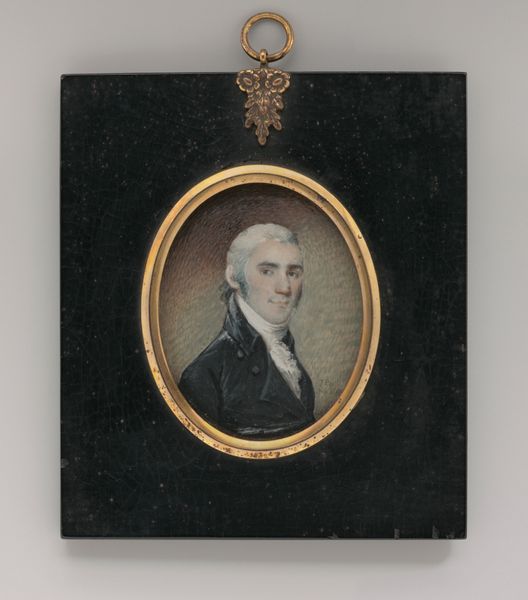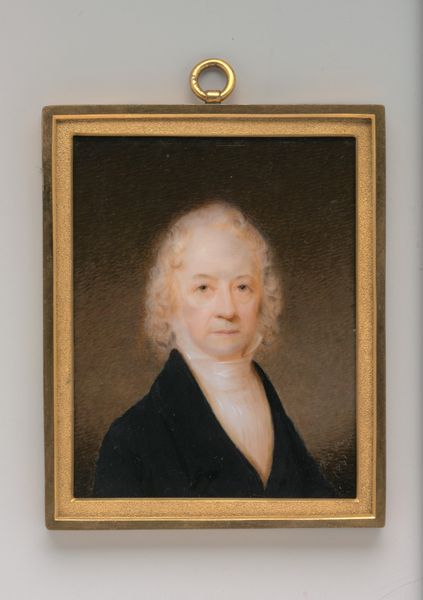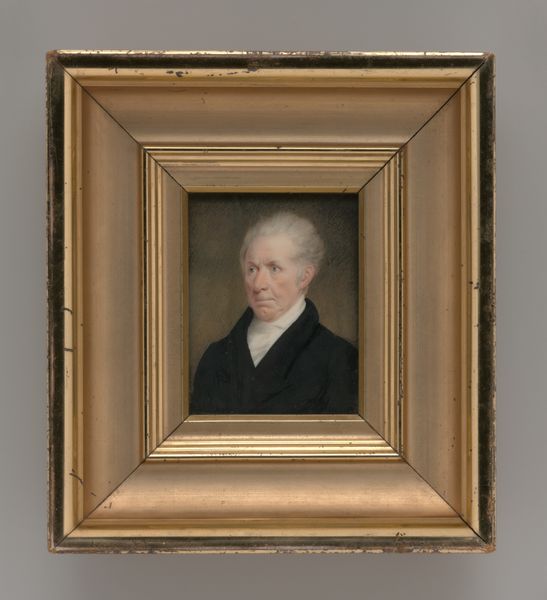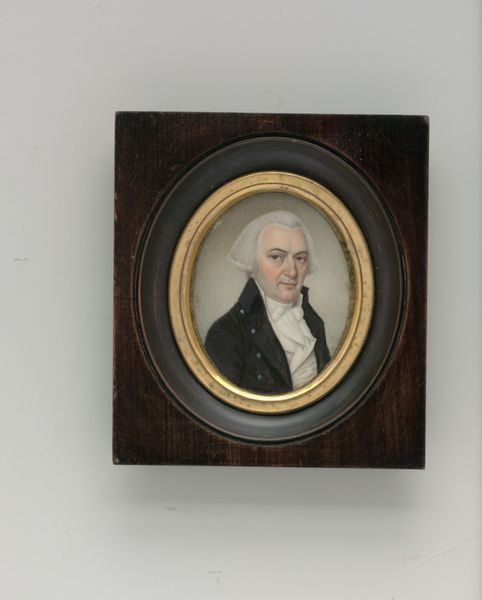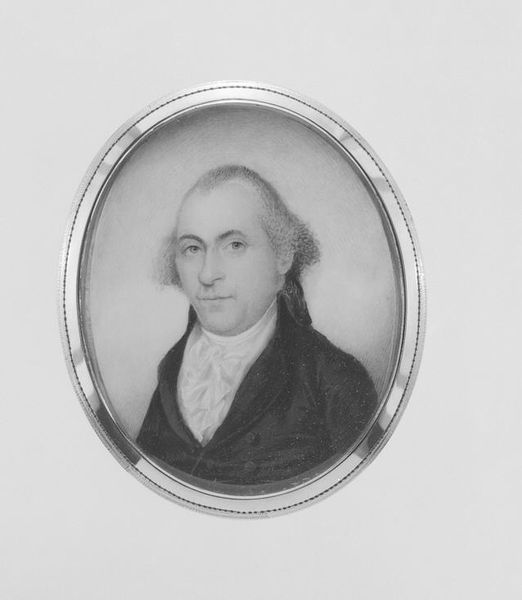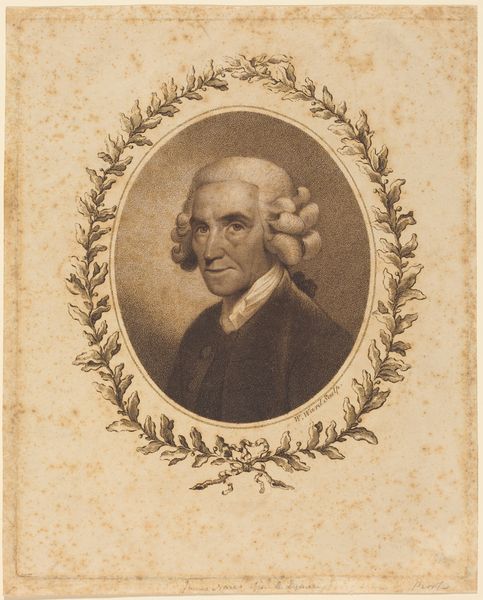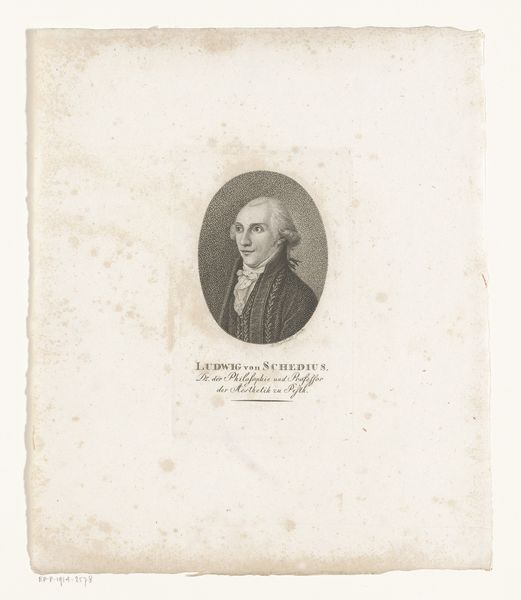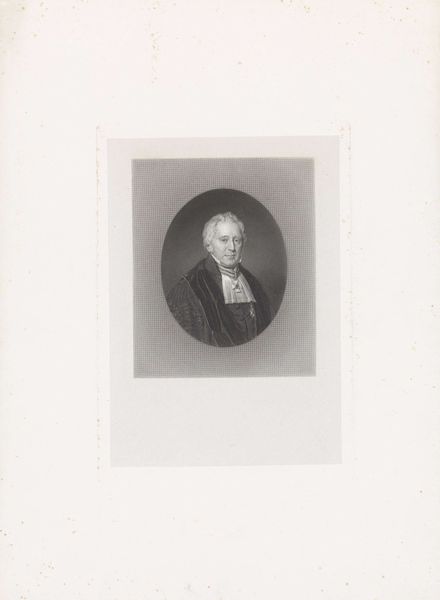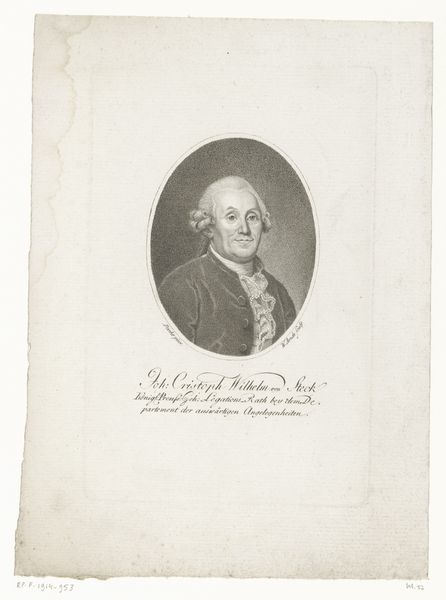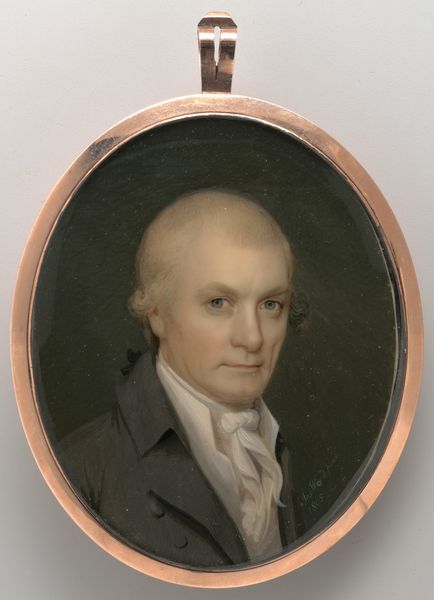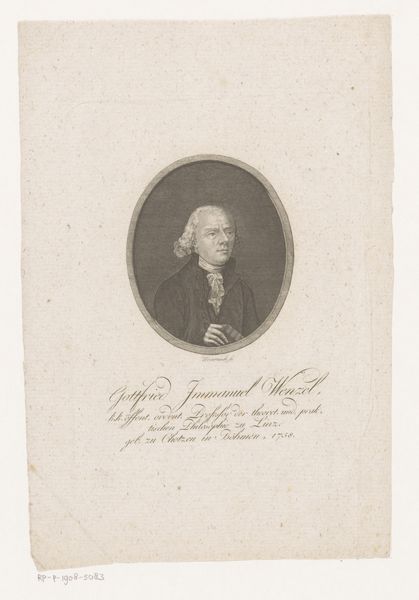
watercolor
#
portrait
#
neoclacissism
#
water colours
#
watercolor
#
miniature
#
watercolor
Dimensions: 3 1/2 x 2 3/4 in. (8.9 x 7 cm)
Copyright: Public Domain
Curator: Here we have a miniature portrait of Robert Gilmor Sr. It was painted with watercolours by Robert Field in 1804. The portrait now resides here at the Metropolitan Museum of Art. Editor: It has a certain… gravity to it, doesn’t it? He looks every bit the serious merchant prince, framed within that gold border. The miniaturization adds an almost precious, intimate quality, but the man’s bearing suggests he's not easily approachable. Curator: Well, Gilmor was a significant figure in Baltimore’s early economic history. He was an importer and a banker; his commercial interests spread far. Miniature portraits were commonly commissioned to display status, solidify family ties, and circulate images across vast networks of contacts, very similar to digital profiles these days, you could say. Editor: The framing then is as important as the portrait itself. It’s interesting to think about how this object functioned within networks of power – a portable signifier of wealth and influence. Given Gilmor's role, I can't help but wonder how his practices intersected with the ongoing debates surrounding economic exploitation and labour at the time. Who produced this portrait, for example, and under what conditions? Curator: Absolutely. It prompts questions about how portraiture became complicit in perpetuating unequal social orders and celebrating wealthy individuals. The materials, the commission – everything speaks to access and privilege in a society steeped in structural inequity. But also keep in mind the prevalent style of Neoclassicism. These miniatures weren’t simply celebrations of individual wealth; they were intended to associate the sitter with ideas of republican virtue. Editor: Still, I’m drawn to think about the ethics of representation within a power structure. Does the work confront these contradictions, or does it passively perpetuate the status quo? This, for me, opens up into how even this very setting is still perceived and engaged with now, from visitors to curatorial decisions. Curator: Contextualising artworks and encouraging critical thought is important for ensuring that their cultural relevance transcends mere aesthetics and extends into engaging with current problems and debates. Editor: I agree entirely, every artwork has to be approached as both aesthetic form and socio-political artifact that's shaped by unequal forces.
Comments
No comments
Be the first to comment and join the conversation on the ultimate creative platform.
